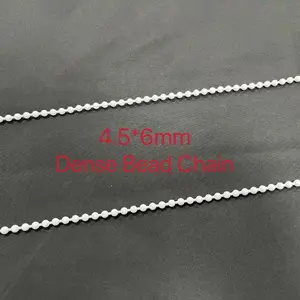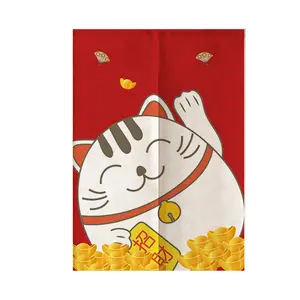A Japanese door curtain, known as "Noren" in Japanese, is a traditional fabric divider typically hung in doorways, restaurants, and shops. It serves both functional and aesthetic purposes. Japanese beaded curtain often features vibrant colors, intricate patterns, and symbolic motifs, reflecting Japanese culture. Beyond its decorative appeal, Noren acts as a partial screen, providing a sense of privacy while allowing airflow. Japanese curtains for doors may showcase artistic designs, kanji characters, or symbols relevant to the establishment. Noren are not only practical dividers but also cultural expressions, embodying the rich artistic heritage and attention to detail in Japanese craftsmanship.
Types of Japanese door curtain
There are two primary types of Japanese Noren door curtains: Sensu Noren (folding fan Noren) and Maekake Noren (apron Noren). Sensu Noren features elegant designs inspired by folding fans. The Noren is adorned with intricate patterns and often depicts scenes from nature, landscapes, or traditional Japanese motifs. Sensu Noren adds a touch of sophistication and cultural charm to spaces, making them popular in traditional Japanese homes, tea houses, and even modern interiors. Unlike Sensu Noren, Maekake Noren serves a more practical purpose. Typically used in shops and restaurants, these curtains are designed like aprons, often displaying the establishment's logo, name, or relevant information. Maekake Noren serves as a practical and decorative divider, creating a distinct boundary while promoting the business.
Materials of Japanese door curtain
Japanese entrance curtains are crafted from various materials, each contributing to their unique aesthetic and functionality. Cotton Noren are popular for their softness and breathability, making them ideal for indoor use. They often feature intricate designs and vibrant colors. On the other hand, linen Noren offers a more textured and rustic feel, perfect for a traditional touch. Both materials showcase Japanese craftsmanship and attention to detail, enhancing the cultural appeal of these door curtains. Whether it's the cozy warmth of cotton or the natural charm of linen, Japanese door curtains embody a rich tapestry of materials and design elements.
Use cases of Japanese door curtain
Japanese door curtains are commonly used in businesses such as restaurants, teahouses, and shops to convey a sense of tradition and hospitality. They often feature symbolic motifs, traditional Japanese characters, or illustrations that represent the establishment's identity. This not only adds an aesthetic touch but also helps create a distinct ambiance, inviting patrons to experience a slice of Japanese culture. In residential settings, Japanese door curtains find utility in maintaining privacy and enhancing interior decor. Placed at room entrances or doorways, they act as temporary dividers, allowing residents to create defined spaces within their homes without the permanence of walls. The designs range from classic patterns to modern artistic expressions, enabling individuals to personalize their living spaces.









































 浙公网安备 33010002000092号
浙公网安备 33010002000092号 浙B2-20120091-4
浙B2-20120091-4